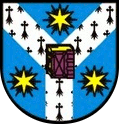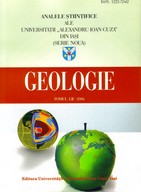(ca. 180 Ma) up to the Lower Cretaceous (ca. 120 Ma). During its opening stage, through a
spreading process, an ocean floor trondhjemitic rock-series, consisting of granophyres,
plagiogranites and plagiaplites, associated with tonalites and quartz-diorites, was formed. These
rocks form parallel dykes in a sheeted dyke complex and occur as dykes cutting the gabbro bodies.
The closing of the ocean was determined by a bilateral subduction process acting along an
Andean-type and a Mariana-type subduction planes. Within the Mariana-type subduction trench,
extending from Drocea to the Trascău Mountains, island arc bimodal volcanism manifested
itself, engendering a second trondhjemitic rock-series, represented by quartz-keratophyres, rhyolites,
dacites and trachytes. The common geochemical features of the two different sources of the
trondhjemitic rock-series consist in their high contents of SiO2 and Na2O, and low contents of
K2O, CaO and MgO.
Copyright © 2011 Published by Ed. Univ. „Al. I. Cuza” Iași. All rights reserved.

English title
- SERIA
GEOLOGIE (AUI-G) - |

|
| Log in New account |
| Home | Main Page | Guide for Authors | Peer Review | New Articles | Events | Archive | Index | Contact us |

|
Article A comparative study on two trondhjemitic rock-series of different origin from the Mureş ophiolitic suture, Romania
Haralambie Savu - Geological Institute of Romania, 1 Caransebeş st., 012271, Bucharest 32, Romania View abstract as pdf file | View full article as pdf file Abstract: Keywords: Mureş Ocean, ocean floor trondhjemites, island arc trondhjemites, geochemistry |
copyright © 2024 Department of Geology |